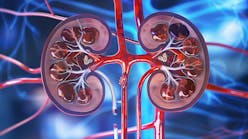Researchers at Johns Hopkins Medicine, the Murdoch Children’s Research Institute in Australia and seven other medical institutions report that an experimental drug called vosoritide, which interferes with certain proteins that block bone growth, allowed the average annual growth rate to increase in a study of 35 children and teenagers with achondroplasia, a form of dwarfism.
The patients’ average boost in height to about 6 centimeters (2.4 inches) per year is close to growth rates among children of average stature, and the side effects of the drug were mostly mild, according to the researchers. Results of the four-year study were summarized online June 18 in the New England Journal of Medicine.
Achondroplasia, although rare, is the most common form of dwarfism worldwide, affecting an estimated one in 15,000–40,000 live births. The condition is caused by mutations in a gene called FGFR3 that result in the excess production of proteins that slow bone growth. The disorder is marked by disproportionate short stature with shortened limbs, near normal-sized torsos and enlarged heads.
About 20 percent of people with achondroplasia inherit the mutations, meaning most children born with it have parents of average height. People with achondroplasia are prone to develop sleep apnea, chronic ear infections, neurological problems, spinal stenosis and bowed legs, frequently requiring surgical treatments to relieve pain and other symptoms.
There are no treatments able to reverse achondroplasia or treat the genetic culprit itself. However, growth hormone has been approved to treat the condition in Japan and occasionally is used off label elsewhere but is not considered very effective in achondroplasia.
Vosoritide is a synthetic version of a protein present in humans called C-type natriuretic peptide. It is designed to bind to a specific receptor on the surface of chondrocytes, a type of cartilage cell found in the growth plates of bones. Once joined, the vosoritide-receptor connection sends a signal inside the fibroblast to stanch the flow of negative growth factors that were triggered by the mutation in the FGFR3 gene.
For the currently reported study, conducted between January 2014 and July 2018, investigators enrolled 35 children ages 5–14 and followed them for a midpoint of 42 months. There were 19 girls and 16 boys, including two Hispanics, seven Asians, and two African Americans.
To enroll in the study, participants had previously been monitored for six months to determine their baseline growth rate. Then, for six months, participants received a daily vosoritide injection through the skin at doses ranging from 2.5–30 micrograms/kilogram. Over the four-year study, two participants discontinued the trial because of anxiety with daily injections. One left the trial because their growth plates closed, and another withdrew for unknown reasons. A fifth was withdrawn when doctors found during a routine electrocardiography that a participant had Wolff-Parkinson-White syndrome, a condition in the electrical circuits of heart muscles that causes rapid heartbeat.
At the end of six months, 30 participants opted to continue taking vosoritide. Participants who had earlier received the lowest doses of the drug received increased dosages, up to 15 micrograms/kg, and the other participants continued to receive their initial doses of 15 and 30 micrograms/kg. One of the 30 patients withdrew from the study to undergo limb-lengthening surgery.
Overall, the researchers found that, on average, the children’s annual growth rate increased from below four centimeters per year to just below six centimeters per year.




